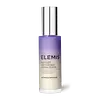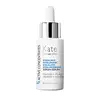What's inside
What's inside
 Key Ingredients
Key Ingredients

 Benefits
Benefits

 Concerns
Concerns

 Ingredients Side-by-side
Ingredients Side-by-side

Water
Skin ConditioningCoco-Caprylate
EmollientGlycerin
HumectantSteareth-2
EmulsifyingCetearyl Alcohol
EmollientPhenoxyethanol
PreservativeHydroxyacetophenone
AntioxidantPhyllanthus Emblica Fruit Extract
HumectantSteareth-21
CleansingPropanediol
SolventDiheptyl Succinate
EmollientCarbomer
Emulsion StabilisingDisodium EDTA
Capryloyl Glycerin/Sebacic Acid Copolymer
Skin ConditioningParfum
MaskingXanthan Gum
EmulsifyingLunaria Annua Seed Oil
EmollientSodium Hydroxide
BufferingHydrolyzed Hyaluronic Acid
HumectantHydrolyzed Verbascum Thapsus Flower
AntioxidantMyrothamnus Flabellifolia Leaf/Stem Extract
HumectantCrocus Sativus Flower Extract
MaskingSaccharide Hydrolysate
HumectantLimonene
PerfumingCananga Odorata Flower Oil
MaskingCitrus Aurantium Bergamia Fruit Oil
MaskingCitrus Aurantium Dulcis Peel Oil
MaskingEugenia Caryophyllus Bud Oil
MaskingJuniperus Mexicana Oil
MaskingLavandula Angustifolia Oil
MaskingCitric Acid
BufferingSodium Benzoate
MaskingTocopherol
AntioxidantPropylene Glycol Dicaprylate/Dicaprate
EmollientNelumbo Nucifera Flower Extract
Skin ConditioningPotassium Sorbate
PreservativeAscorbic Acid
AntioxidantHydrolyzed Yeast Protein
Skin ConditioningEugenol
PerfumingLinalool
Perfuming1,2-Hexanediol
Skin ConditioningCaprylyl Glycol
EmollientCitrus Aurantium Amara Leaf/Twig Oil
MaskingPolianthes Tuberosa Flower Extract
PerfumingRosmarinus Officinalis Leaf Oil
MaskingVetiveria Zizanoides Root Oil
MaskingAnthemis Nobilis Flower Oil
MaskingCitrus Aurantium Flower Oil
PerfumingCymbopogon Nardus Oil
MaskingJasminum Officinale Flower Extract
MaskingJasminum Sambac Flower Extract
MaskingLitsea Cubeba Fruit Oil
MaskingMyrocarpus Fastigiatus Oil
MaskingCitrus Aurantium Amara Flower Oil
MaskingWater, Coco-Caprylate, Glycerin, Steareth-2, Cetearyl Alcohol, Phenoxyethanol, Hydroxyacetophenone, Phyllanthus Emblica Fruit Extract, Steareth-21, Propanediol, Diheptyl Succinate, Carbomer, Disodium EDTA, Capryloyl Glycerin/Sebacic Acid Copolymer, Parfum, Xanthan Gum, Lunaria Annua Seed Oil, Sodium Hydroxide, Hydrolyzed Hyaluronic Acid, Hydrolyzed Verbascum Thapsus Flower, Myrothamnus Flabellifolia Leaf/Stem Extract, Crocus Sativus Flower Extract, Saccharide Hydrolysate, Limonene, Cananga Odorata Flower Oil, Citrus Aurantium Bergamia Fruit Oil, Citrus Aurantium Dulcis Peel Oil, Eugenia Caryophyllus Bud Oil, Juniperus Mexicana Oil, Lavandula Angustifolia Oil, Citric Acid, Sodium Benzoate, Tocopherol, Propylene Glycol Dicaprylate/Dicaprate, Nelumbo Nucifera Flower Extract, Potassium Sorbate, Ascorbic Acid, Hydrolyzed Yeast Protein, Eugenol, Linalool, 1,2-Hexanediol, Caprylyl Glycol, Citrus Aurantium Amara Leaf/Twig Oil, Polianthes Tuberosa Flower Extract, Rosmarinus Officinalis Leaf Oil, Vetiveria Zizanoides Root Oil, Anthemis Nobilis Flower Oil, Citrus Aurantium Flower Oil, Cymbopogon Nardus Oil, Jasminum Officinale Flower Extract, Jasminum Sambac Flower Extract, Litsea Cubeba Fruit Oil, Myrocarpus Fastigiatus Oil, Citrus Aurantium Amara Flower Oil
Water
Skin ConditioningSqualane
EmollientGlycerin
HumectantPPG-24-Glycereth-24
EmulsifyingIsosorbide Disunflowerseedate
HumectantIsosorbide Dicaprylate
Skin ConditioningDimethicone
EmollientCaprylic/Capric Triglyceride
MaskingPropanediol
SolventPanthenol
Skin ConditioningPotassium Cetyl Phosphate
EmulsifyingTremella Fuciformis Sporocarp Extract
AntioxidantAdenosine
Skin ConditioningSodium Acetylated Hyaluronate
HumectantSodium Hyaluronate
HumectantSodium Hyaluronate Crosspolymer
HumectantHydrolyzed Sodium Hyaluronate
Skin ConditioningGlyceryl Stearate
EmollientCetearyl Alcohol
EmollientGlycine Soja Seed Extract
Skin ConditioningStearic Acid
CleansingSodium Lauroyl Glutamate
Hydroxyethyl Acrylate/Sodium Acryloyldimethyl Taurate Copolymer
Emulsion StabilisingXanthan Gum
EmulsifyingTetradecyl Aminobutyroylvalylaminobutyric Urea Trifluoroacetate
Skin Conditioning1,2-Hexanediol
Skin ConditioningPentylene Glycol
Skin ConditioningCaprylhydroxamic Acid
Polyisobutene
PEG-7 Trimethylolpropane Coconut Ether
EmulsifyingEthylhexylglycerin
Skin ConditioningMagnesium Chloride
Disodium EDTA
Citric Acid
BufferingPotassium Sorbate
PreservativeSodium Benzoate
MaskingWater, Squalane, Glycerin, PPG-24-Glycereth-24, Isosorbide Disunflowerseedate, Isosorbide Dicaprylate, Dimethicone, Caprylic/Capric Triglyceride, Propanediol, Panthenol, Potassium Cetyl Phosphate, Tremella Fuciformis Sporocarp Extract, Adenosine, Sodium Acetylated Hyaluronate, Sodium Hyaluronate, Sodium Hyaluronate Crosspolymer, Hydrolyzed Sodium Hyaluronate, Glyceryl Stearate, Cetearyl Alcohol, Glycine Soja Seed Extract, Stearic Acid, Sodium Lauroyl Glutamate, Hydroxyethyl Acrylate/Sodium Acryloyldimethyl Taurate Copolymer, Xanthan Gum, Tetradecyl Aminobutyroylvalylaminobutyric Urea Trifluoroacetate, 1,2-Hexanediol, Pentylene Glycol, Caprylhydroxamic Acid, Polyisobutene, PEG-7 Trimethylolpropane Coconut Ether, Ethylhexylglycerin, Magnesium Chloride, Disodium EDTA, Citric Acid, Potassium Sorbate, Sodium Benzoate
Ingredients Explained
These ingredients are found in both products.
Ingredients higher up in an ingredient list are typically present in a larger amount.
1,2-Hexanediol is a synthetic liquid and another multi-functional powerhouse.
It is a:
- Humectant, drawing moisture into the skin
- Emollient, helping to soften skin
- Solvent, dispersing and stabilizing formulas
- Preservative booster, enhancing the antimicrobial activity of other preservatives
Cetearyl alcohol is a mixture of two fatty alcohols: cetyl alcohol and stearyl alcohol. It is mainly used as an emulsifier. Emulsifiers help prevent the separation of oils and products. Due to its composition, it can also be used to thicken a product or help create foam.
Cetearyl alcohol is an emollient. Emollients help soothe and hydrate the skin by trapping moisture.
Studies show Cetearyl alcohol is non-toxic and non-irritating. The FDA allows products labeled "alcohol-free" to have fatty alcohols.
This ingredient is usually derived from plant oils such as palm, vegetable, or coconut oils. There is debate on whether this ingredient will cause acne.
Due to the fatty acid base, this ingredient may not be Malassezia folliculitis safe.
Learn more about Cetearyl AlcoholCitric Acid is an alpha hydroxy acid (AHA) naturally found in citrus fruits like oranges, lemons, and limes.
Like other AHAs, citric acid can exfoliate skin by breaking down the bonds that hold dead skin cells together. This helps reveal smoother and brighter skin underneath.
However, this exfoliating effect only happens at high concentrations (20%) which can be hard to find in cosmetic products.
Due to this, citric acid is usually included in small amounts as a pH adjuster. This helps keep products slightly more acidic and compatible with skin's natural pH.
In skincare formulas, citric acid can:
While it can provide some skin benefits, research shows lactic acid and glycolic acid are generally more effective and less irritating exfoliants.
Most citric acid used in skincare today is made by fermenting sugars (usually from molasses). This synthetic version is identical to the natural citrus form but easier to stabilize and use in formulations.
Read more about some other popular AHA's here:
Learn more about Citric AcidDisodium EDTA plays a role in making products more stable by aiding other preservatives.
It is a chelating agent, meaning it neutralizes metal ions that may be found in a product.
Disodium EDTA is a salt of edetic acid and is found to be safe in cosmetic ingredients.
Learn more about Disodium EDTAGlycerin is already naturally found in your skin. It helps moisturize and protect your skin.
A study from 2016 found glycerin to be more effective as a humectant than AHAs and hyaluronic acid.
As a humectant, it helps the skin stay hydrated by pulling moisture to your skin. The low molecular weight of glycerin allows it to pull moisture into the deeper layers of your skin.
Hydrated skin improves your skin barrier; Your skin barrier helps protect against irritants and bacteria.
Glycerin has also been found to have antimicrobial and antiviral properties. Due to these properties, glycerin is often used in wound and burn treatments.
In cosmetics, glycerin is usually derived from plants such as soybean or palm. However, it can also be sourced from animals, such as tallow or animal fat.
This ingredient is organic, colorless, odorless, and non-toxic.
Glycerin is the name for this ingredient in American English. British English uses Glycerol/Glycerine.
Learn more about GlycerinPotassium Sorbate is a preservative used to prevent yeast and mold in products. It is commonly found in both cosmetic and food products.
This ingredient comes from potassium salt derived from sorbic acid. Sorbic acid is a natural antibiotic and effective against fungus.
Both potassium sorbate and sorbic acid can be found in baked goods, cheeses, dried meats, dried fruit, ice cream, pickles, wine, yogurt, and more.
You'll often find this ingredient used with other preservatives.
Learn more about Potassium SorbatePropanediol is an all-star ingredient. It softens, hydrates, and smooths the skin.
It’s often used to:
Propanediol is not likely to cause sensitivity and considered safe to use. It is derived from corn or petroleum with a clear color and no scent.
Learn more about PropanediolSodium Benzoate is a preservative. It's used in both cosmetic and food products to inhibit the growth of mold and bacteria. It is typically produced synthetically.
Both the US FDA and EU Health Committee have approved the use of sodium benzoate. In the US, levels of 0.1% (of the total product) are allowed.
Sodium benzoate works as a preservative by inhibiting the growth of bacteria inside of cells. It prevents the cell from fermenting a type of sugar using an enzyme called phosphofructokinase.
It is the salt of benzoic acid. Foods containing sodium benzoate include soda, salad dressings, condiments, fruit juices, wines, and snack foods.
Studies for using ascorbic acid and sodium benzoate in cosmetics are lacking, especially in skincare routines with multiple steps.
We always recommend speaking with a professional, such as a dermatologist, if you have any concerns.
Learn more about Sodium BenzoateWater. It's the most common cosmetic ingredient of all. You'll usually see it at the top of ingredient lists, meaning that it makes up the largest part of the product.
So why is it so popular? Water most often acts as a solvent - this means that it helps dissolve other ingredients into the formulation.
You'll also recognize water as that liquid we all need to stay alive. If you see this, drink a glass of water. Stay hydrated!
Learn more about WaterXanthan gum is used as a stabilizer and thickener within cosmetic products. It helps give products a sticky, thick feeling - preventing them from being too runny.
On the technical side of things, xanthan gum is a polysaccharide - a combination consisting of multiple sugar molecules bonded together.
Xanthan gum is a pretty common and great ingredient. It is a natural, non-toxic, non-irritating ingredient that is also commonly used in food products.
Learn more about Xanthan Gum